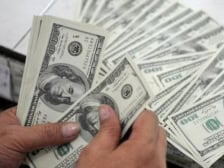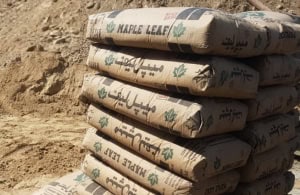ISLAMABAD – Many in Pakistan view our foreign loans as the biggest challenge to the country’s economy but in reality it is the trade deficit, which has contracted by almost two percent during first four months of the current fiscal year.
In 2017, with a deficit of more than $35 billion, Pakistan was ranked eighth in terms of the size of the trade deficit. The country had a trade deficit of $13.9 billion with China and $6.7 billion with the UAE in 2017. Moreover, it had a trade deficit of more than $1 billion with nine countries including Saudi Arabia, India, Thailand and Japan. In 2013, the trade deficit with China was $4 billion. Hence, the increase in CPEC-related imports was by far the most important factor in the rising trade deficit.
But, according to the latest data of Pakistan Bureau of Statistics, (PBS), the trade deficit has been controlled due to the unexpected increase in exports as against the imports.
The country’s trade deficit was recorded at US$11.8 billion during July-October period of the ongoing financial year as against US$12 billion of the corresponding period of previous year, showing a decline of 1.97 percent.
In FY18, Pakistan witnessed a record trade deficit of US$37.6 billion; 15.7 percent higher from last year. The broad-based and quantumled rebound in exports – after consecutive declines over the last three years – was overshadowed by surging imports, which almost touched the US$61 billion mark.
According to the State Bank of Pakistan (SBP), adverse movement in global oil prices, coupled with strong demand for industrial raw materials – metals and allied products – was mainly responsible for the higher imports. Resultantly, the country’s balance of payments came under severe strain during the past year.
However, the overall exports in first four months of FY19 increased by 3.52 percent to $7.38 billion as compared to $ 7.13 billion worth of goods exported in the corresponding period of previous fiscal year. Imports in first four months of FY19 remained intact, going up by 0.06 percent to $ 19.17 billion as against $ 19.16 billion in the same period of FY18.
On monthly basis, exports from Pakistan to other countries went up significantly by 10.15 percent in October 2018 to $1.91 billion as compared to $ 1.82 billion in September 2018. Similarly, imports in the country also grew by 9.28 percent in October 2018 to $4.94 billion as compared to $4.53 billion in the month of September 2018. Trade deficit widened by 8.72 percent to $2.94 billion in October 2018 as compared to $ 2.80 billion in September 2018.
On yearly basis, during October 2018, the country saw an increase in exports as Pakistan exported $1.91 billion worth of goods to the world that was 1.17 percent higher than exports worth of $1.88 billion in the same month of last fiscal year.
However, imports registered 1 percent decline to $ 4.94 billion in the month of October 2018 as compared to $ 4.90 billion imports in corresponding month of FY17. As a result, country’s trade imbalance shrunk by 2.36 percent in October 2018 to $ 2.93 billion, as against $3.00 billion in October 2017.
Pakistan’s Economic Woes & the Agriculture sector
Being an agricultural country, Pakistan’s economy is based on its four main produces i.e. Wheat, Rice, Cotton and Sugarcane. But due to wavering decision making at policy for the last two years, the export opportunity could not be exploited to its maximum potential.
Experts believe Pakistan’s sugar industry can play a vital role in exporting its product if a firm policy is formulated
During the last two years lack of a clear firm policy and internal hiccups resulted in export of sugar at subsidized rates, ultimately hurting the economy and the grower.
In the year 2016, Pakistan had surplus sugar available for export. Price of sugar in the international market in April, 2016 was US$580/ton. But the previous government declined to permit export and a golden opportunity was lost. Ultimately, the government had to extend permission to deal with the crisis of surplus sugar at that time. The international market had by then dropped to US380/ton, forcing the government to subsidize the export at that stage.
The outgoing/interim government hesitated to take decision on export of surplus sugar during 2018 and deferred the decision for the next government. Now the PTI government has allowed export of sugar but such unrealistic conditions have been imposed that export of sugar has not been possible so far.
The wavering decision making/hurdles in the police have adverse effect on the grower in general and reduction of export of the country. This year, the government estimates are that sugarcane cultivation has reduced by 30 percent. It will have the following effects:
- Surplus sugar may not be available this year for export thus resulting in decline of overall export of the country.
- Ethanol that accounts for about US$1 billion export will reduce by 30%.
- Thirty percent of the growers have either shifted to some other crop or has skipped the season, leading to undue pressure on other crops or lack of economic activity.
- We may have to import sugar by the year 2020 if appropriate measures are not adopted.
How this can be avoided?
- Timely decision regarding export policy
- Establishment of relationship between purchase price of sugarcane and product price rate i.e. refined sugar.
- Government must balance out the interest of grower vis-à-vis industrial unit. It can be done by creating buffer stock, which can be used to create a balance in the market.
Exports of goods and services as a percentage of GDP for Pakistan have also declined from 12.4% in 2012 to 8.2% in 2017, the lowest amongst major economies in the South Asian region. Exports of textile products, which have the largest share, have hovered around $13 billion. Bangladesh and Vietnam increased their textile exports by more than 70% during the same time period.
It is important to note that Pakistan was one of the top five importers of textile machinery in 2005. Bangladesh and Vietnam import primarily knitting machinery, while Pakistan imports mostly spinning machinery involved in upstream production.
Both Vietnam and Bangladesh imported textile machinery at 145% more value than that for the textile machinery imported by Pakistan in 2017. Since 2010, imports of textile machinery into Pakistan have remained stagnant.
As Pakistan is a large cotton-producing country, investments in upstream textile production, such as cotton yarn, is likely. However, there is an urgent need to increase investments in downstream high value-added exports in the textile industry, such as garments and other finished products. The increase in exports in FY18 was primarily due to the utilisation of idle capacity in the textile sector.
Since assuming the office, Prime Minister Imran Khan has highlighted the drastic impacts of this widening trade deficit on the country’s economy.
During his recent visit to Malaysia, he said the first step towards ridding the country of its chronic loan dependency is to increase exports.
“If Malaysia, with a population of 30 million people, has exports worth $220 billion, and we, with a population of 201 million people have exports worth $24bn, then clearly we are doing something wrong,” the PM said while unveiling his government’s four-pronged strategy to pull Pakistan out of its “quagmire of loans”.
The premier says his team was working on a “programme to increase exports”.














